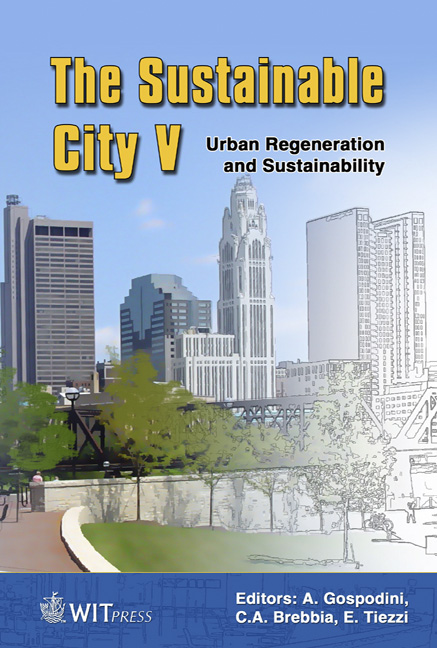New Technologies Opposing Urban Sustainability
Price
Free (open access)
Transaction
Volume
117
Pages
10
Page Range
1 - 10
Published
2008
Size
2,661 kb
Paper DOI
10.2495/SC080011
Copyright
WIT Press
Author(s)
A. Gospodini
Abstract
This paper is concerned with the impacts of new technologies on urban sustainability. First, it briefly presents those new technological developments affecting urban life of individuals. Then, it focuses on new spatial phenomena which are encouraged by new technologies and opposing urban sustainability: (a) urban sprawl, exurban new centralities and the ‘dispersed city’, and (b) the socio-demographic restructuring and diminishing of inner city areas. It finally discusses green architecture and energy-save buildings which nowadays are feasible by new technological developments, and in this sense, they may moderate the negative impacts of new technologies on cities. Keywords: urban sustainability, new technologies, spatial impacts, dispersed city, socio-demographic restructuring of inner city areas, green architecture. 1 New technologies affecting urban life In the last two decades or so, a series of new technological developments has strongly affected everyday life of individuals in developed regions of the global: First, new developments in ICT’s, multimedia and telecommunications provide excessive information to individuals generating a growing flow of events in time, or a kind of ‘acceleration of history’, and giving rise to information societies (see [1−9]). Second, the development and increasing use of mobile telecommunications (mobile cells, mobile internet connections), as combined with the development of high-speed transportation means and infrastructure, such as high-speed trains and closed high speed motorways in urban, suburban, and regional networks, offer individuals the possibility to make use of almost all office facilities in terms of communication and work, while travelling. This has resulted in high mobility of individuals on all territorial scales − metropolitan, regional, continental, and the rise of the phenomenon of ‘time-space
Keywords
urban sustainability, new technologies, spatial impacts, dispersed city, socio-demographic restructuring of inner city areas, green architecture.





